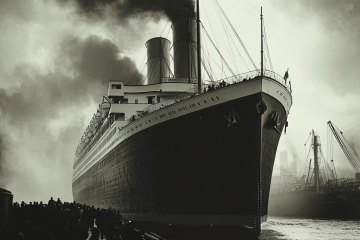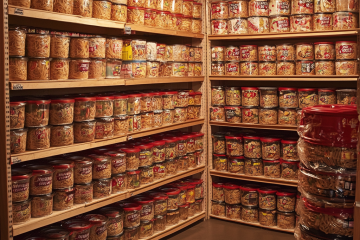 Today I’m going to give you an easy way to cook in a do-it-yourself solar oven. Understand that I do so only in the name of independence as circumstances may prevent you from having access to a commercially made solar oven. However, if I had a choice between using my own homemade solar oven and a commercial one, I would go commercial any time. Why? Because the commercial solar ovens I recommend are specifically made to handle rugged third world conditions. They are intended for cooking everyday for a number of years (5-15, depending on which model you get). The DIY solar ovens are not likely to last that long, be as sturdy, or handle as much volume as a solar oven you may purchase commercially.
Today I’m going to give you an easy way to cook in a do-it-yourself solar oven. Understand that I do so only in the name of independence as circumstances may prevent you from having access to a commercially made solar oven. However, if I had a choice between using my own homemade solar oven and a commercial one, I would go commercial any time. Why? Because the commercial solar ovens I recommend are specifically made to handle rugged third world conditions. They are intended for cooking everyday for a number of years (5-15, depending on which model you get). The DIY solar ovens are not likely to last that long, be as sturdy, or handle as much volume as a solar oven you may purchase commercially.
There are three key components to a solar oven. 1) You’ve got to have sun. So long as you have enough sun to cast a shadow, you can cook in a solar oven. It doesn’t matter the temperature outside as long as you have a suitably constructed solar oven. 2) You need a way of insulating the heat from the sun. This is typically done with dark colors which attract and absorb the sun, combined with layers of insulation which will keep the heat in the sun oven container. 3) You need a seal of some sort that allows the sun rays to get through but keeps the heat in (and small critters out). A reflector is not essential in solar cooking as they merely direct the available sun, making the heat more intense. So you can use a reflector or not, depending on the time you have available for cooking. It won’t affect the fact that you can still cook in a solar oven. So, now that you know what the components are, let’s talk about a DIY solar oven.

Spray paint a Mason jar. Photo c/o solarcooking.org
The easiest DIY solar oven I use requires a Mason jar, a roasting bag, a block of wood, some black BBQ grill paint, and a twisty tie. Simply spray paint the outside of the jar (lid and all) with the black BBQ grill paint. (Note: I put a strip of masking tape down the side of the jar when I spray paint it so that I can have a visual on how the food is cooking inside.) Then place the jar on top of a block of wood with the lid on it and place everything inside a large roasting bag. I also recommend that you put an oven thermometer inside so that you can keep an eye on the temperature inside the bag. Seal the top of the roasting bag with a twisty tie. Place your package in the sun, and cook away.
The roasting bag acts as your seal to let the sun through but keep the heat in. The block of wood allows the hot air to circulate, even under the jar. The dark paint on the jar is to attract the sun’s heat and light. You can cook in a small jar, a half-gallon size or even put multiple jars in a roasting bag. Bottom line is with a DIY solar oven, you can cook without the use of fuel on a sunny day. Simply put your ingredients in the jar and cook. You don’t need to stir or babysit it. Just keep it exposed to sun. So long as you’ve got a temperature in there of 180 degrees or more, you’re cooking.
Another common way to make a solar oven is out of the bottom of a thick box used for shipping apples to the grocery store. Paint the OUTSIDE of the box with the BBQ grill paint, then line the inside of the box with something dark to absorb the heat and help with insulation. I recommend lining it with dark colored towels (you can staple the lining in). Then cover your open box with a heavy pane of plexi-glass or tempered glass like you would use to cover a coffee table. Put a covered, dark, thin-walled pan with your food inside the box and cook away.

Dark, thin-walled pans like this are ideal for cooking with in your solar oven. Photo c/o sunoven.com
I recommend using a lid on your cooking pan whenever possible when cooking in a solar oven. It ensures that the moisture and the nutrients stay a part of your dish. If you don’t have a dark, thin-walled pan and lid, put your food in a regular Pyrex casserole dish, cover it well with foil, and place a dark towel on top. The foil is to keep the moisture inside the dish and act as a seal. But foil exposed by itself will simply reflect the sun’s rays away—which is why we put the reflectors in our car windshields during the summer. Putting the dark towel on top of it helps to absorb the heat instead of deflecting it.
Solar cooking with a DIY solar oven usually takes longer cooking time than a well-built commercial one. But it’s better than not having that option. And besides, the kids seem to get a kick out of being able to do it yourself.
To see our upcoming event schedule, click here
Subscribe to Preparedness Pro today and never miss a thing!
For any questions or comments on this article, please leave a comment on the blog site so that everyone can benefit!
Copyright Protected 2009, Preparedness Pro and Kellene. All Rights Reserved. No portion of any content on this site may be duplicated, transferred, copied, or published without written permission from the author. However, you are welcome to provide a link to the content on your site or in your written works.



13 Comments
Comments are closed.